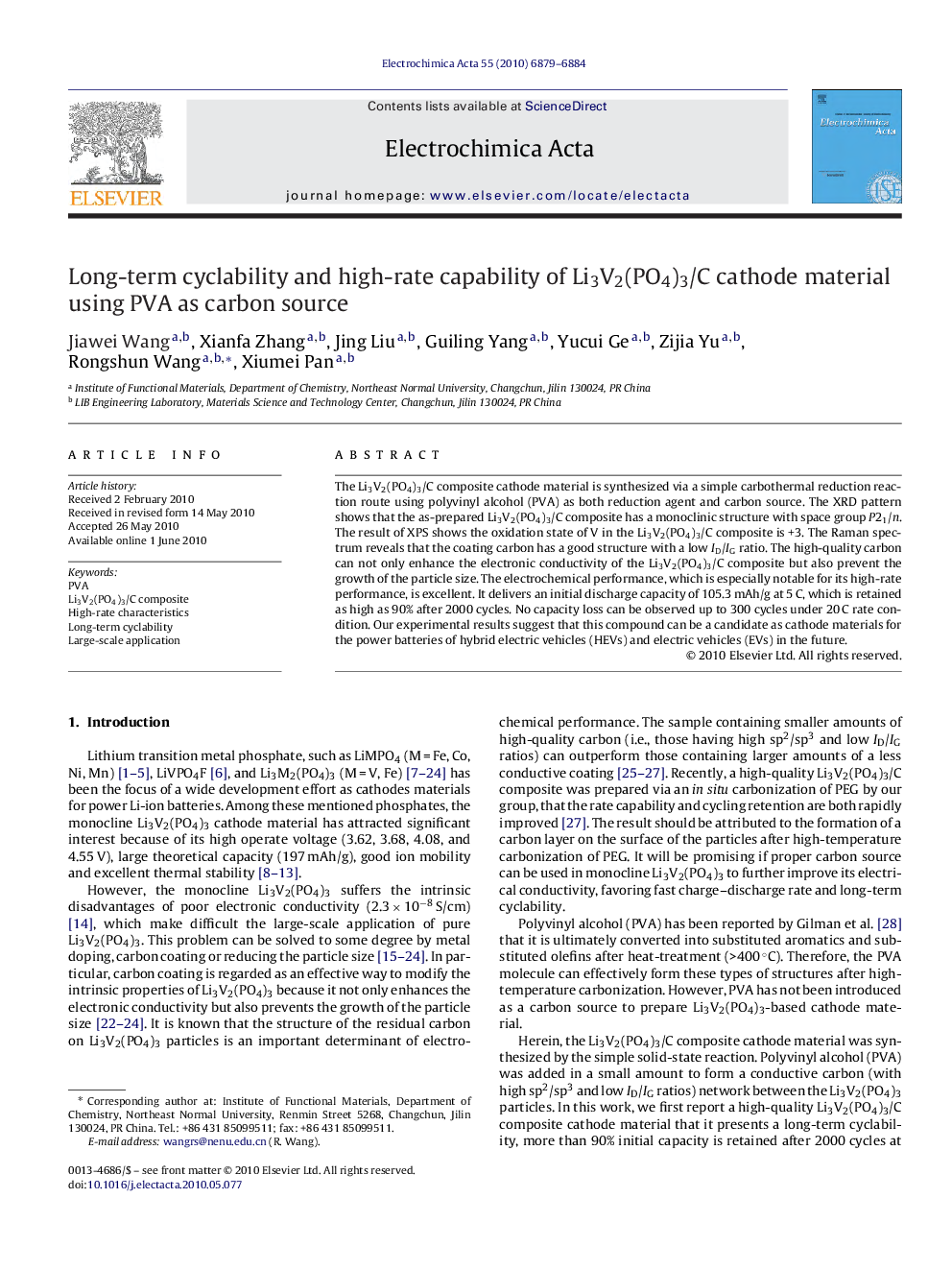| Article ID | Journal | Published Year | Pages | File Type |
|---|---|---|---|---|
| 192248 | Electrochimica Acta | 2010 | 6 Pages |
The Li3V2(PO4)3/C composite cathode material is synthesized via a simple carbothermal reduction reaction route using polyvinyl alcohol (PVA) as both reduction agent and carbon source. The XRD pattern shows that the as-prepared Li3V2(PO4)3/C composite has a monoclinic structure with space group P21/n. The result of XPS shows the oxidation state of V in the Li3V2(PO4)3/C composite is +3. The Raman spectrum reveals that the coating carbon has a good structure with a low ID/IG ratio. The high-quality carbon can not only enhance the electronic conductivity of the Li3V2(PO4)3/C composite but also prevent the growth of the particle size. The electrochemical performance, which is especially notable for its high-rate performance, is excellent. It delivers an initial discharge capacity of 105.3 mAh/g at 5 C, which is retained as high as 90% after 2000 cycles. No capacity loss can be observed up to 300 cycles under 20 C rate condition. Our experimental results suggest that this compound can be a candidate as cathode materials for the power batteries of hybrid electric vehicles (HEVs) and electric vehicles (EVs) in the future.
